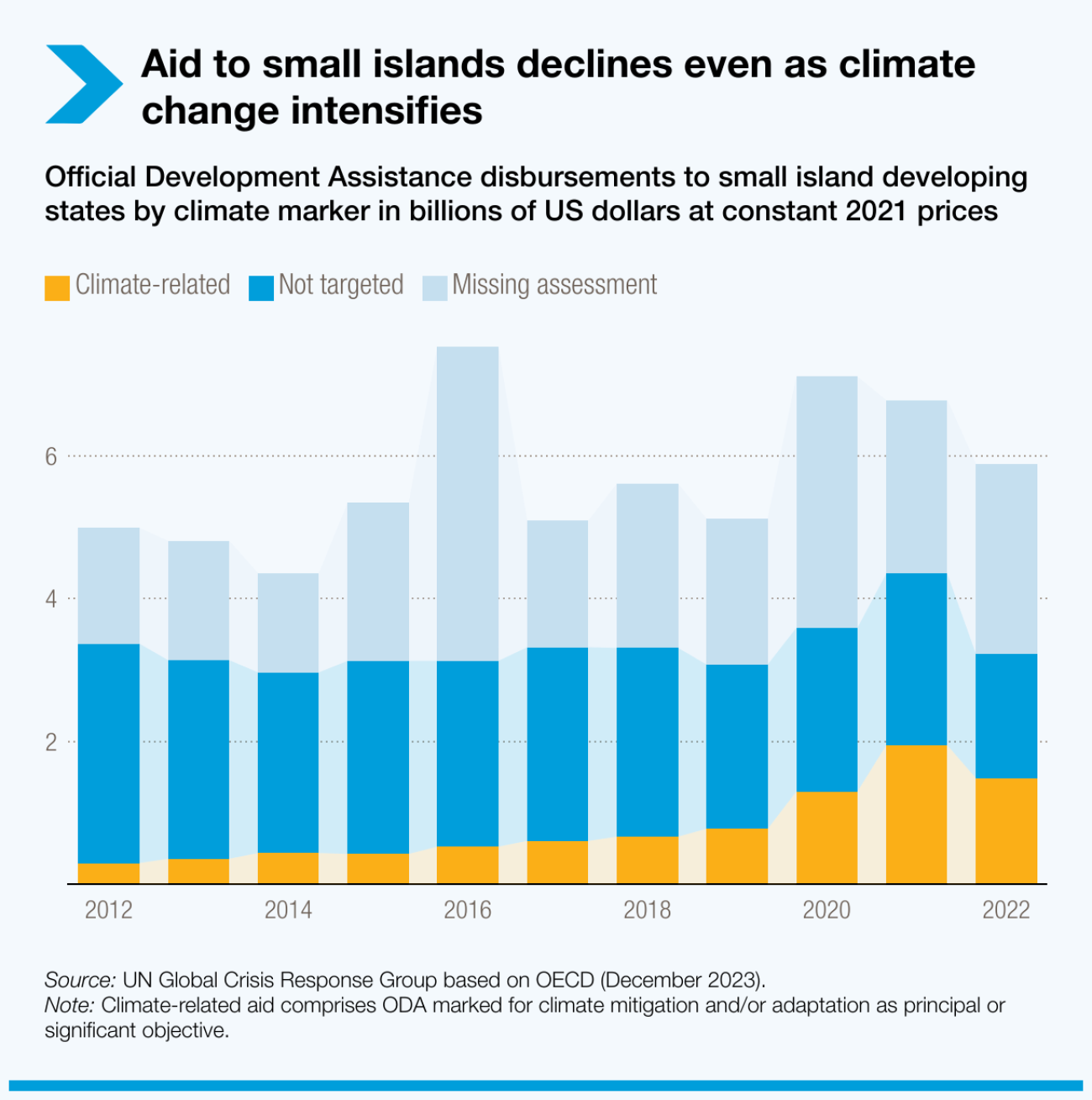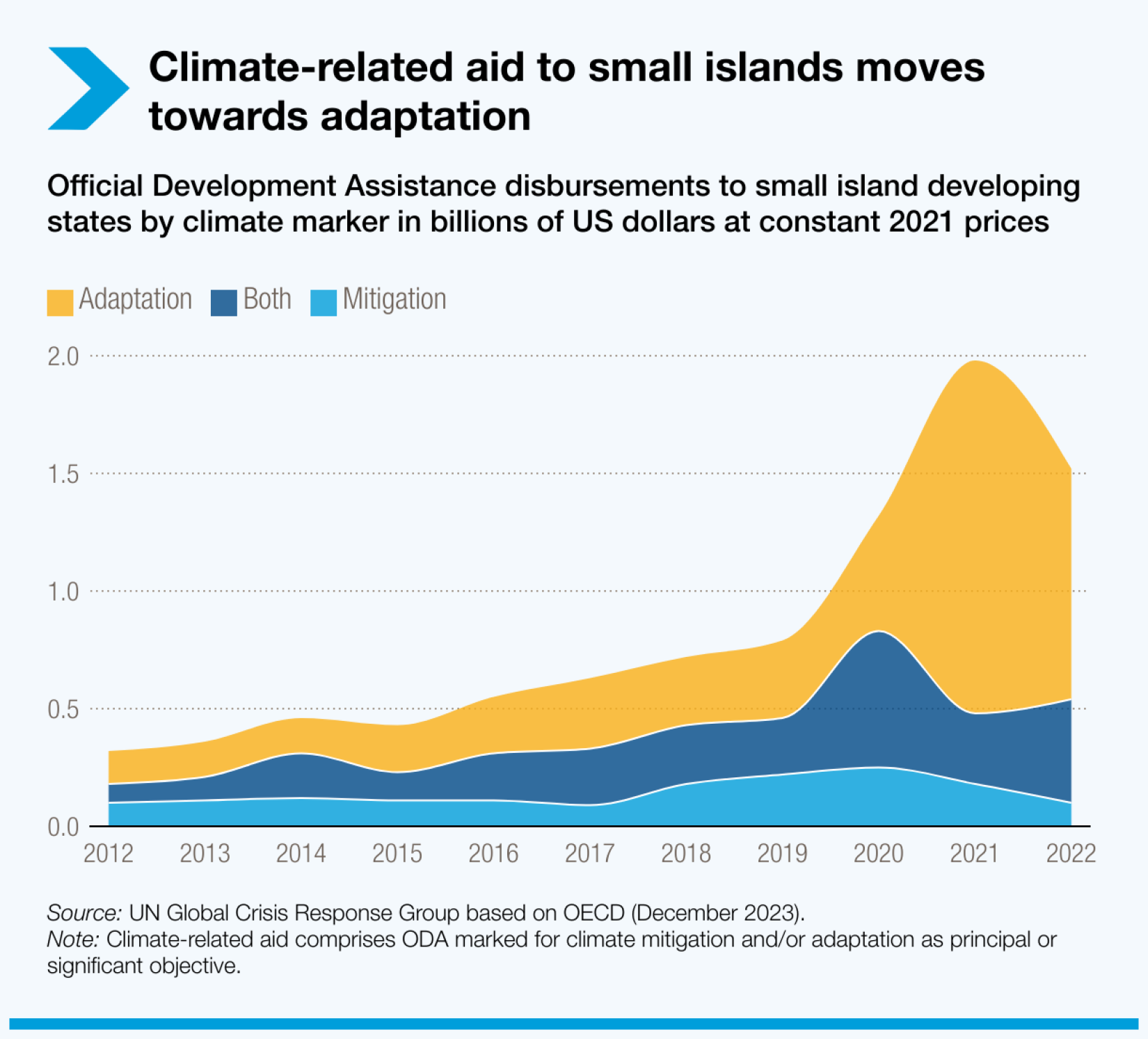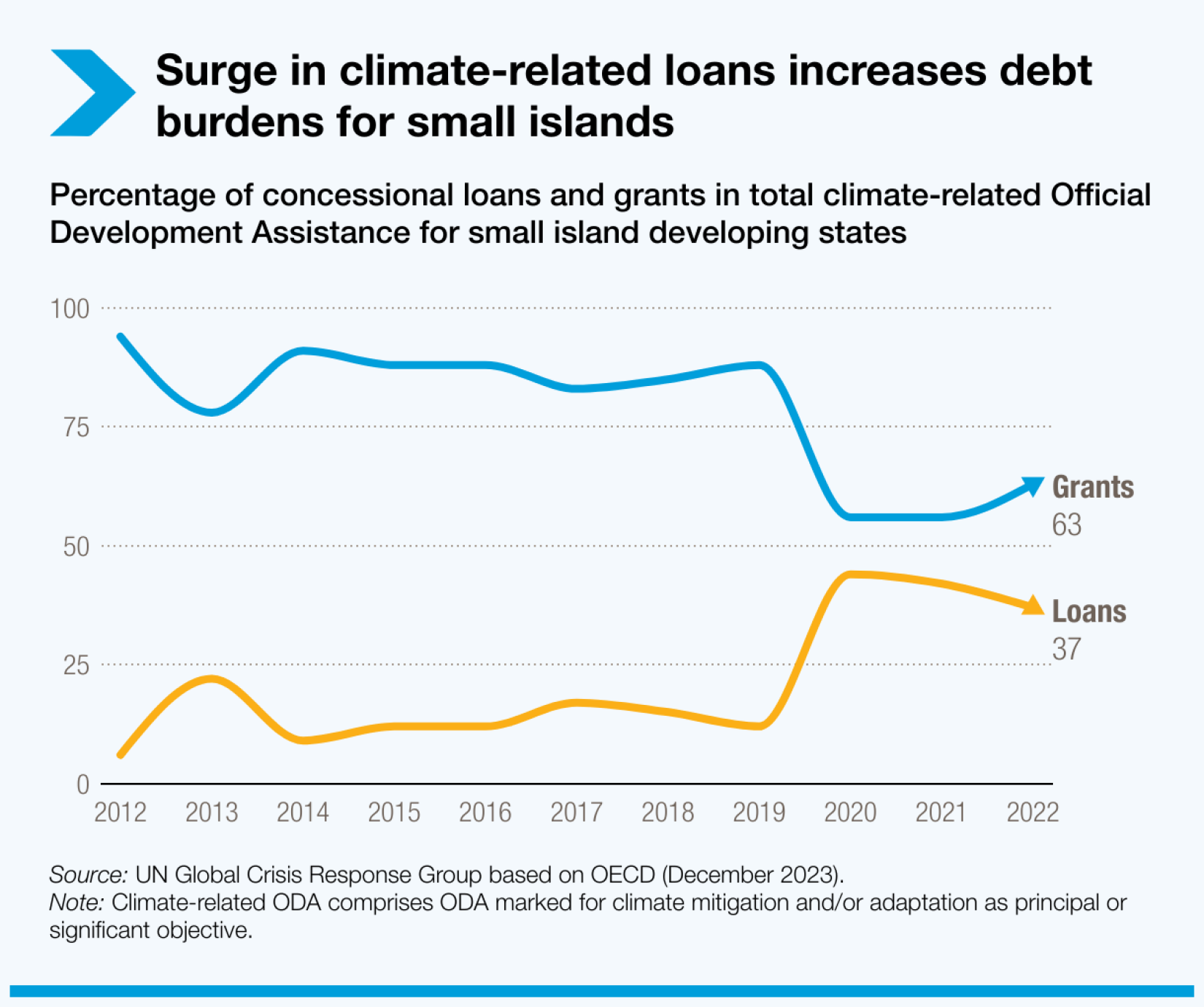Aid to small islands falls even as temperatures rise

Exposed to sea level rise and extreme weather events, these islands are in dire need of the right financial support to survive climate change.
Global warming continues its upwards march, posing an existential threat to many small island developing states (SIDS). In the last six months of 2023, these vulnerable nations faced record heat, with the average surface temperature 1.7°C higher than in the 1951-1980 reference period.
Exposed to not only higher temperatures but also rising sea levels and extreme weather events, vulnerable island nations urgently need financial support to survive climate change. Yet international support for SIDS has recently faltered, even as cascading crises hit.
In 2022, despite a record $287 billion in global Official Development Assistance (ODA), aid to SIDS fell by 13% to $5.9 billion, according to the latest analysis by UN Trade and Development. For economies that rely heavily on imports of essential goods like food and fuel, as well as on external financial flows – such as many SIDS – this decline in aid is a significant blow.
UN Trade and Development Secretary-General Rebeca Grynspan will join world leaders in Antigua and Barbuda for the 4th International Conference on Small Island Developing States. She will underscore the urgency to step up aid to SIDS, especially for climate adaptation and mitigation.
Climate-related aid remains insufficient despite some positive trends
Over the last decade, climate-related ODA to SIDS increased steadily, with a notable acceleration after 2019. However, in 2022 it declined to $1.5 billion, a 23% drop compared to the year before.
This amount is inadequate compared to SIDS’ needs. In the Caribbean alone, the damage caused by natural hazards, including climate events, is estimated at $12.6 billion per year.
Yet there is a positive trend in the shift from mitigation to adaptation in climate-related ODA to SIDS. These island nations emit less than 1% of global CO2 emissions, so the scope for mitigation is limited. However, they face some of the most severe impacts of climate change and thus face significant adaptation challenges.

The slump in 2022 affected projects targeting either adaptation or mitigation efforts separately, with disbursements falling by $524 million (35%) and $79 million (43%) year-on-year, respectively. Meanwhile, ODA targeting simultaneously adaptation and mitigation increased by $144 million (49%) compared to 2021, partly attenuating the overall decline.
But aid should avoid worsening debt burdens
While aid is always welcome, its modality matters. The share of concessional loans in climate-related ODA to SIDS has more than doubled since the COVID-19 pandemic, reaching about 40% of total climate-related aid.

Although these loans are provided under concessional terms, they inevitably exacerbate the $85 billion debt burden faced by SIDS – equivalent to 72% of their combined GDP. This only adds to the price SIDS have to pay for a climate emergency they did not create.
Balancing grants and loans is crucial to prevent SIDS from being locked in a debt-climate trap. Only through increased and appropriately structured support can these islands hope to weather the existential threat posed by climate change.
............................................
This story was first published by UN Trade and Development.

